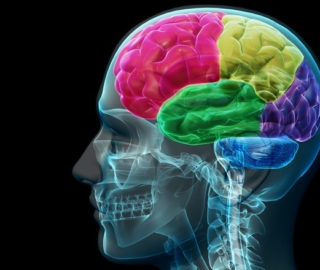
The Jetsons cartoon show of the 1960’s portrayed a “futuristic” household that admittedly seems humorous to us today. An all-capable robotic maid, moving sidewalks and jet packs might have seemed realistic then, but didn’t end up being the picture that seems to have taken shape.
Though the development of home robotics hasn’t hit it’s stride, massive efforts are being put forth to develop the field – and find commercial applications. Right now, the Jetsons maid robot is still the stuff of fantasy, but the technologies we do interact with art increasingly “smart.” Our coffeemakers cook automatically when we’d like, our washers and driers adapt to what we put inside of them, and more-or-less everything is controllable by remote control.
Dr. Daniel Polani teaches today in the Department of Computer Science, University of Hertfordshire and Associate Editor of Advances in Complex Systems. During our interview he likened the “smart” world of the future – including the potential developments in robotics – to a “jungle.” To paraphrase:
Thousands of years ago we left the jungle. In the jungle you are surrounded by life, immersed in life. There is never a dull moment when any noise could be either a predator, or food. Now, we are building ‘life’ and ‘intelligence’ into all of the devices and machines around us. We’re going back into a world where all the machines are speaking to and calibrating with each other, where again we’re surrounded by life beeps, chirps, lights… life. We’re going back into the jungle.
Dr. Polani talks about how technology will potentially calibrate it’s function from us, with lights and music attuning themselves to our mood, and various household functions (the opening of garage doors, the preparation of food, etc…) being triggered by the right circumstances and signals from us – the users and owners.
In terms of robotics, we’ve hit a hurdle – and it’s one that that many researchers are aware of, and eager to overcome. The hurdle, for Dr. Polani, is what he calls “the common sense problem”: the ability to learn and adapt to interact with objects that they are unfamiliar with. Handling different items of varying density, weight, and material is something that human’s can understand quite easily, but which we have not been able to tackle in the development of intelligent robots.
Dr. Polani uses the example of a robot built for dusting. If the robot is lifting and moving different objects in order to dust the surfaces within an room, it have to move a heavy objects, light objects, and very delicate objects. In order to move a peice of paper from a flat surface, a robot would have to have the good sense to slide the paper off of the edge of the ledge and pick it up with it’s fingers without damaging it, as opposed to merely pinching or gripping the paper from above. All of these tasks are rather simple even for a small child, but have been remarkably difficult to build into robots thus far.
For entrepreneurs, Dr. Polani believes that the iRobot Roomba robot may very well be a great example of how robotics might be employed in the home. Its task – under the proper circumstances – is rather simple, and it’s environment is defined (EI: flat floor, defined barriers, not too many obstructions). Finding applications for robots in these contexts makes sense give the capacity of robots today, but Polani believes that these applications are rather limited.
His belief is that more research should be applied in determining how humans and animals can so quickly adapt to understanding how to interact with various items and objects, as opposed to finding limited and narrow applications, and building incrementally off of these minor advances. Though this incremental
As for precisely what the future holds, Dr. Polani is tentative even to give a hint. Even recent or future breakthroughs – in his eyes – should be seen as pieces to an always bigger puzzle: “If you have a breakthrough… that means you map out a new area… then in the next area… and only when these breakthroughs start talking to each other… only then to things become feasible in terms of practicality.” Indeed.
Oh, and as for the Jetsons… it turns out that they did predict the robotic vacuum. Score 1 for the 1960’s. Makes you wonder… which of the “crazy” robotics ideas of today will be the first to make it into the mainstream?
Image credit: Guido Kuip







